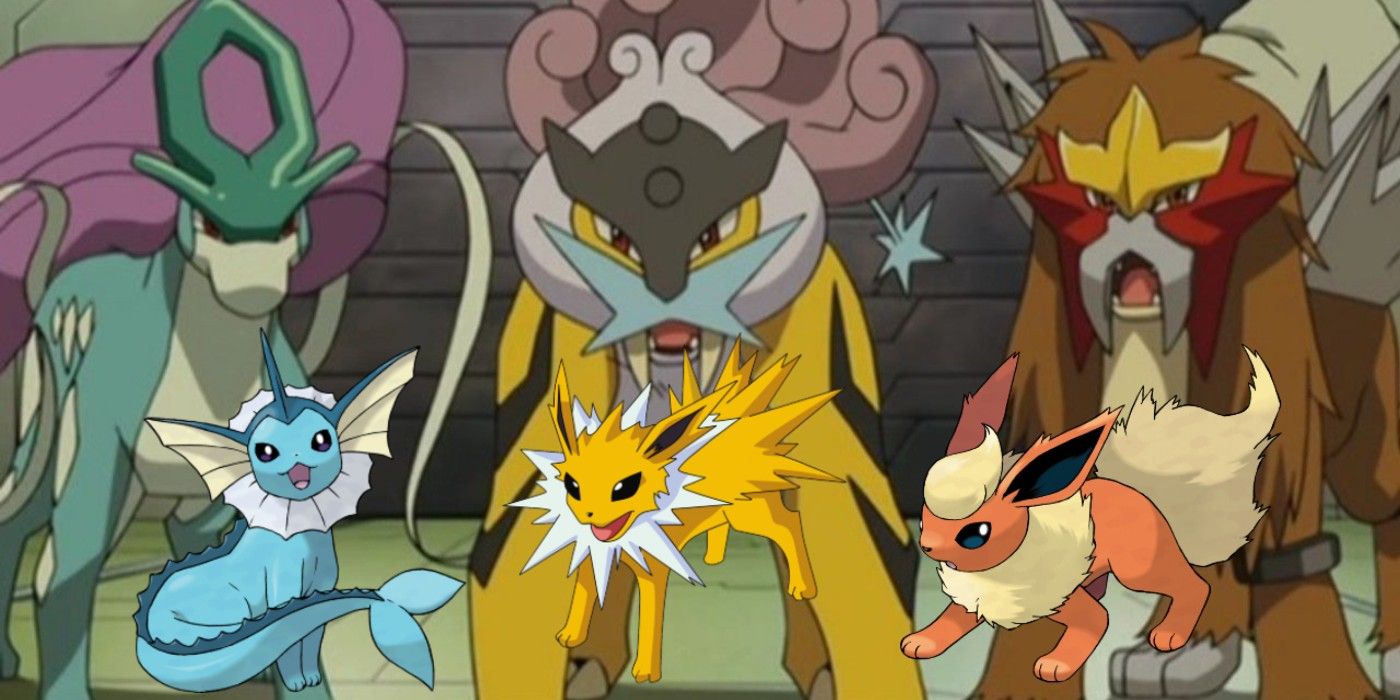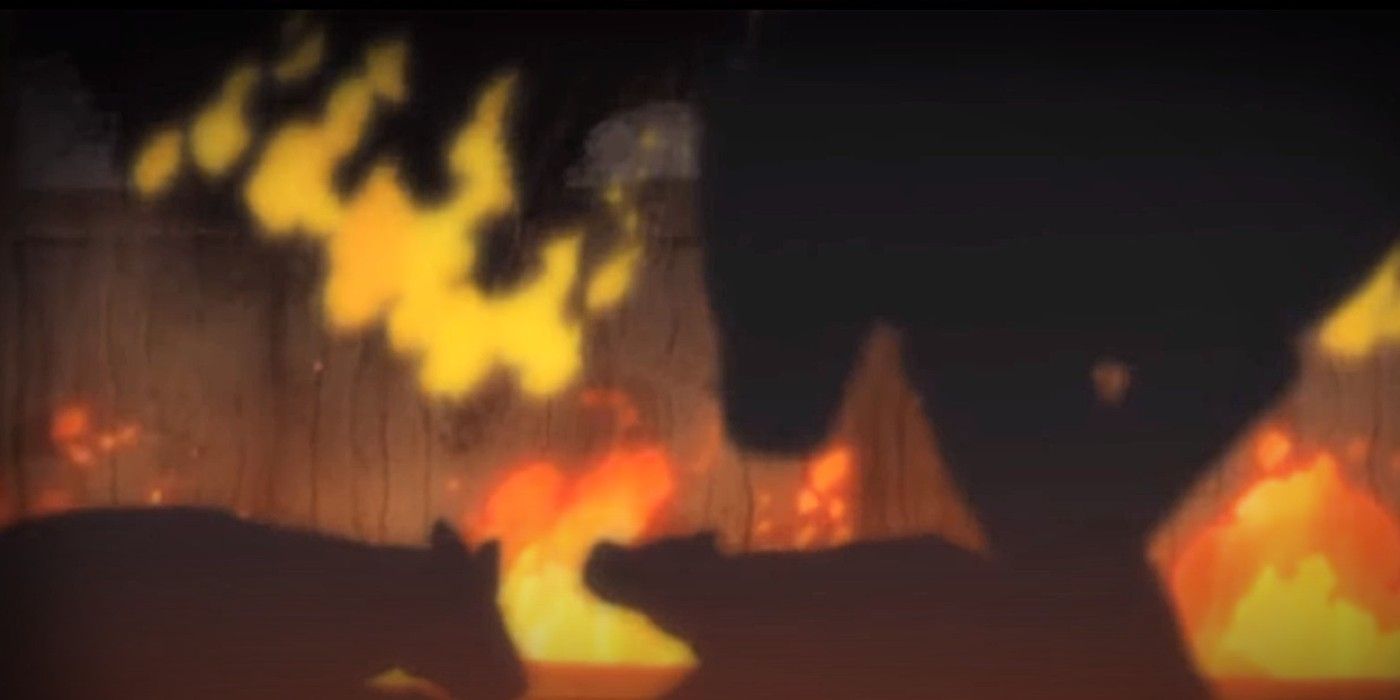The 3 Legendary Beasts are some of the most mysterious creatures in the Pokémon franchise. Like all legendaries, they are incredibly powerful and hard to obtain. Many legendary Pokémon are often based on lore revolving around creation and destruction, and the Legendary Beasts are no different.
The trio — comprised of Raikou, Entei, and Suicune — were first introduced in Pokémon: Gold and Silver. Between the games and the anime, fans learned that the trio was created when the Brass Tower in Ecruteak City burned down 150 years before Generation II took place, taking the lives of 3 unnamed Pokémon. Devastated, Ho-oh revived the Pokémon into the legendaries they are today, each representing a stage of the tower’s destruction: Raikou, the electric Pokémon, symbolizes the lightning bolt that struck the tower; Entei, a fire type, represents the fire that burned it down; and Suicune, a water Pokémon, embodies the rain that extinguished the fire. Fans have speculated as to what kind of Pokémon the Legendary Beasts were prior to their resurrection.
A common theory is that the former versions of the Legendary Beasts were once the original three Eeveelutions: Jolteon, Flareon, and Vaporeon. Pokecommunity user Bounsweet provided a convincing amount of evidence to support this theory in 2013, and countless others have made similar claims since Generation II was released. The popularity of this theory is most likely due to how many parallels are found between the Legendary Beasts and the original Eeveelutions.
3 Unnamed Pokémon Resurrected by Ho-Oh Become The Legendary Beasts
Probably the most obvious comparison is the type-similarities that both sets of trios share, as well as physical appearances. They are all quadruped, cat-dog-like Pokémon (with the exception of Vaporeon, who has two legs and tail-like fin). Raikou and Jolteon are both yellow electric types, Entei and Flareon are red fire types, and Suicune and Vaporeon are blue water-type Pokémon. Raikou, Entei, and Suicune also have hidden abilities introduced in Generation V that mirror those of Jolteon, Flareon, and Vaporeon’s normal abilities: Volt Absorb, Flash Fire, and Water Absorb, respectfully.
Both sets of trios also have similar stats. Jolteon and Raikou have high speed and special attacks stats. Flareon and Entei have a high attack stat, and Vaporeon and Suicune have a high special defense. However, Vaporeon's highest base stat is its HP, whereas Suicune’s is both Defense and Special Defense. Still, they are both tanky Pokémon, a common characteristic of water types. Furthermore, the 5 Kimono Girls — trainers in the Ecruteak Gym located in the same city as the Brass Tower, which was later renamed the Burned Tower — all own an Eeveelution (Jolteon, Flareon, Vaporeon, Espeon, and Umbreon). In the anime, they are called the Kimono sisters, but they still own the same Eeveelutions.
The coincidences between the Legendary Beasts and the original Eeveelutions are hard to ignore, making this theory one of the more plausible ones. It’s likely that the creators gave the beasts the same hidden abilities as the Eeveelutions in Generation V and onward as a nod to this theory. Then again, in the anime Pokémon Generations episode 6, “The Reawakening,” silhouettes are shown of the nameless Pokémon that perished in the Brass Tower’s fire. They look nothing like Jolteon, Flareon, and Vaporeon, nor any recognizable Pokémon for that matter. While this episode has been used to debunk this Legendary Trio origin theory, it’s also likely that the silhouettes are ambiguous simply to symbolize the fact that the Pokémon that were consumed in the fire were never named. It is worth noting that the Legendary Beasts are likely based off of different creatures and mythological deities from Japan and China. Either way, this Pokémon theory remains just that — albeit a convincing one — as it has no definitive proof or counter-evidence.
Source: Pokecommunity/Bounsweet


